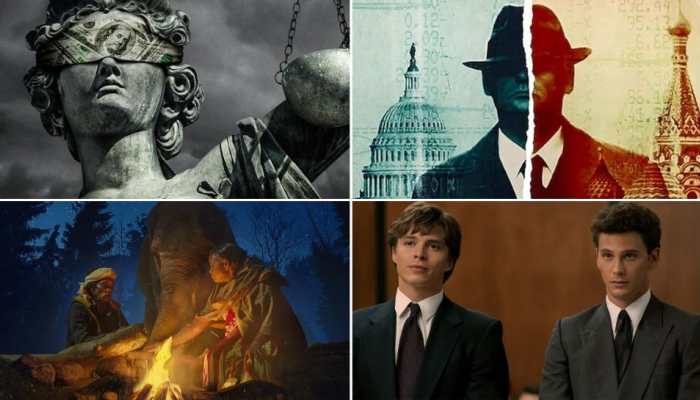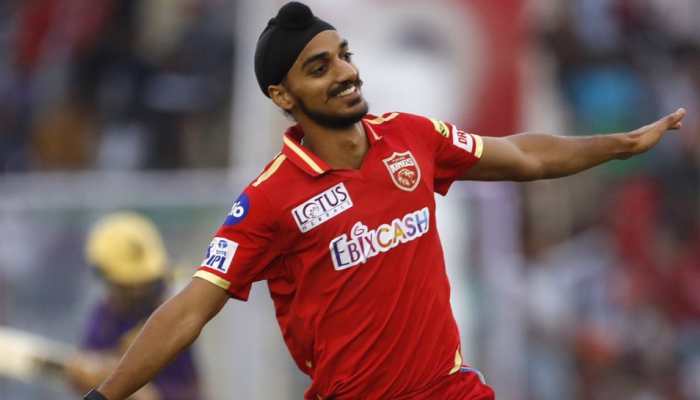An India-US link in Bharatanatyam`s journey
The kinship was quaint, spanning two continents and cultures. And yet American percussionist and Carnatic musician Douglas M. Knight jr. is one of the most important people in Bharatanatyam legend Thanjavur Balasaraswati`s illustrious household.
Trending Photos
)
New Delhi: The kinship was quaint, spanning two continents and cultures. And yet American percussionist and Carnatic musician Douglas M. Knight jr. is one of the most important people in Bharatanatyam legend Thanjavur Balasaraswati`s illustrious household.
The American exponent of percussion instrument mridangam is the late dancer`s son-in-law. And he is now her biographer.
"I didn`t choose her; I was part of her family. My association with several members of Balasaraswati`s family has been at the centre of my musical and personal life since the late 1960s," Knight told IANS.
Knight`s biography of the dancer, "Balasaraswati: Her Art & Life (Westland)" arrived at bookstores in India last week.
Balasaraswati (1918-1984) was one of the first generation of Bharatanatyam dancers who took the genre out of the confines of the devadasi or temple dancer traditions to put it in the mainstream of Indian culture.
Balasaraswati was known for her sophistication and elegance of style.
Knight`s first encounter with the family dates back to 1971. He "encountered her brother Ranganathan as an undergraduate at the University of Wesleyan (Connecticut) in 1971".
"Ranga was a Carnatic musician. I decided to follow this practice and when I was a graduate student at the California Institute of Arts, Balasaraswati held a residency there," Knight said.
The lyricism and beauty of Bharatanatyam drew Knight to India. "I came close to the family, married her daughter and learnt to play the mridangam. I studied the instrument between 1968 and 1981 and accompanied Balasaraswati`s daughter Lakshmi for 25 years," Knight recalled.
Knight first performed as a drummer with Balasaraswati`s daughter Lakshmi in 1974 and collaborated for the next 25 years.
"We married in 1980 and lived in Balasaraswati`s home in Chennai. Our son Aniruddha absorbed and learned the family styles of music and dance. I watched her teach her daughter Lakshmi and our son," Knight said.
After wife Lakshmi`s death, Knight has been accompanying Aniruddha, a Bharatanatyam dancer, on the mridangam for the last 15 years. "He carries on in his mother Lakshmi`s and grandmother Balasaraswati`s traditions," Knight said.
Knight said "Balasaraswati`s story was set in a community organised according to matrilineal principles". It meant that the heads of the households were women.
Balasaraswati was the seventh generation descendant of the musician and dancer Papammal - an 18th century court performer in the Thanjavur court in present-day Tamil Nadu. "The traditions of music and dance flowed continuously within the family since Papammal`s time," Knight said.
The dancer and her daughter "made extraordinary investments in teaching and nurturing of their knowledge of Bharatanatyam and Carnatic music in the US", Knight said. "Since Balasaraswati`s brother Viswanathan first visited the US in 1958, eight members of the family have taught and toured North America," he said.
Balasaraswati`s journey as a professional dancer is also the course that a political and cultural crusade to democratise the dance and put down the anti-nautch movement across India (tradition) mapped out for itself. The anti-nautch groups protested against "tradition or parampara and temple dancing".
According to Knight, in the early 1930s, the anti-nautch movement came at loggerheads with the new forward-looking perspective of the provisional executive group which had formed the Madras Music Academy in the late 1920s over public performances.
Concurrent with the anti-nautch movement was another movement urging the revival of traditional dance, arguing that "the art could and should be rehabilitated".
In April 1932, Balasaraswati had performed under the sponsorship of the Indian Cultural Bureau in Chennai. The press reviews revealed the ongoing controversy, Knight said.
During the 1930s, 1940s and the 1950s, Balasaraswati`s art was "the centre of a debate over the appropriateness of the narrative dance theme of human love - Sringara - on the modern stage".
Knight in his book says, "Bala believed that dancers were afraid to deal with `sringara` because they did not understand or deliver it on the level for which it was intended".
Knight puts together Balasaraswati`s career as a dancer in seven chapters. He places her life in the bigger context of the evolution of Bharatanatyam as the most popular classical dance form from an ancient temple ritual.
IANS
Stay informed on all the latest news, real-time breaking news updates, and follow all the important headlines in india news and world News on Zee News.
Advertisement
Live Tv
Advertisement







)
)
)
)
)
)
)
)
)
)
